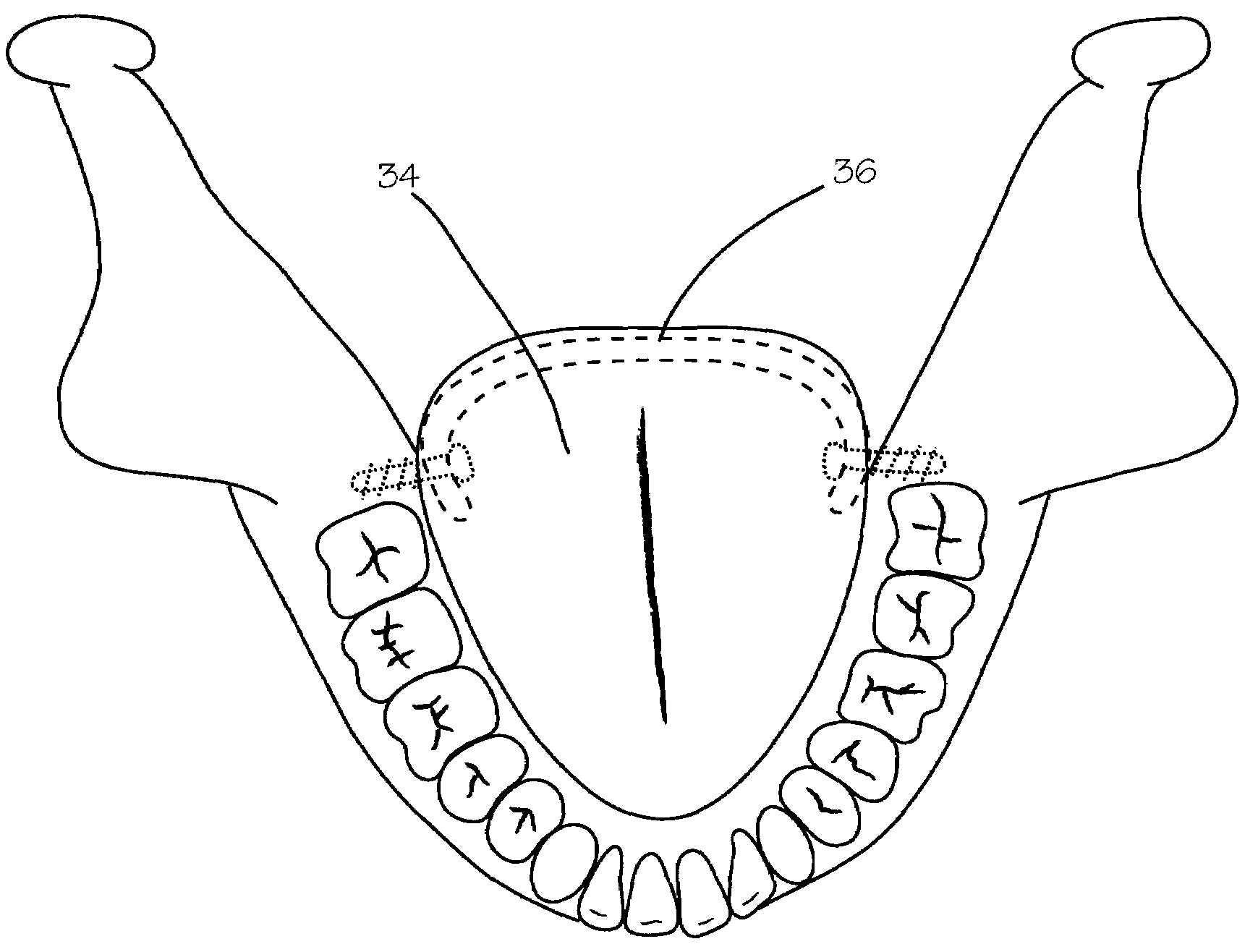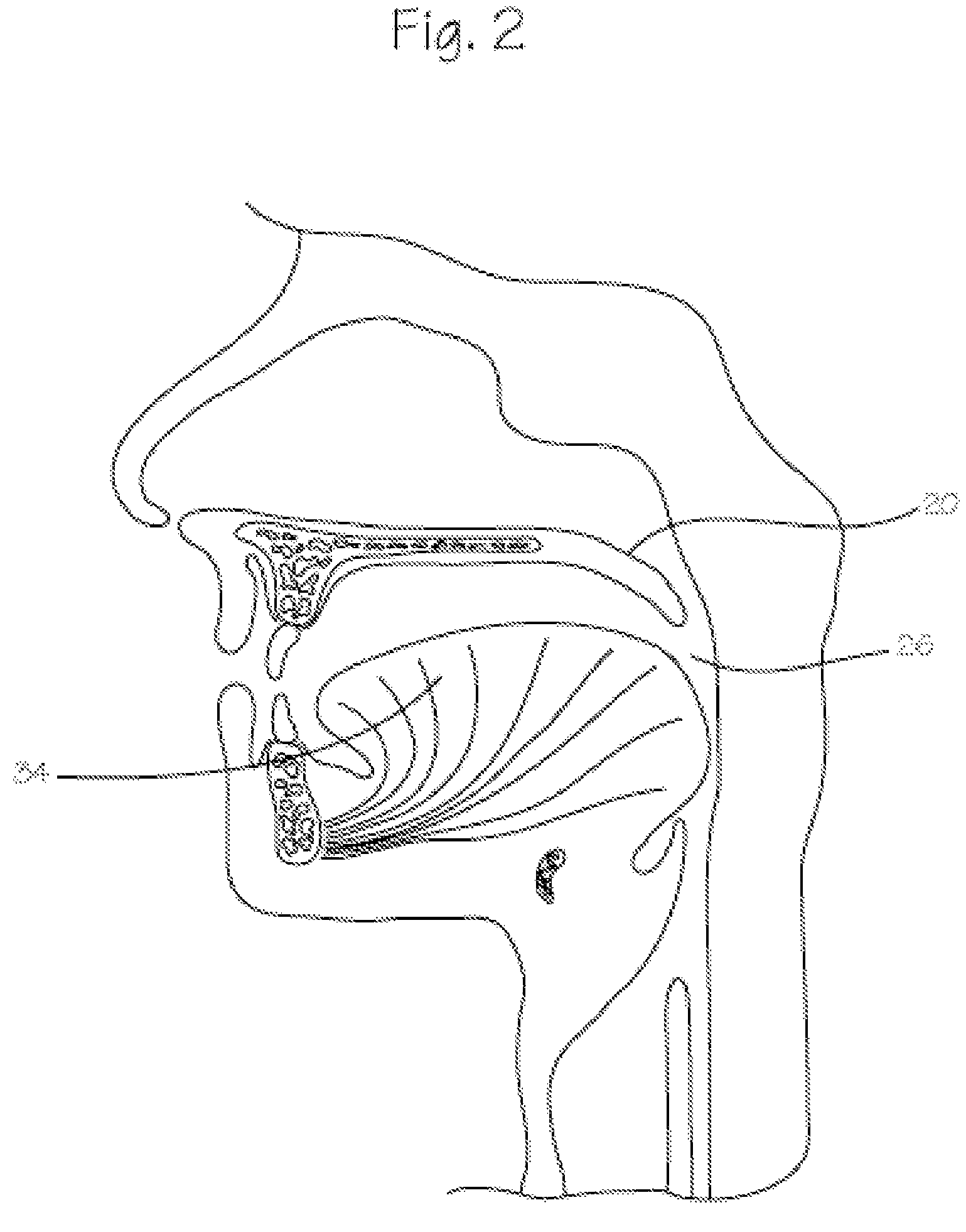Method and device for treatment of obstructive sleep apnea
a technology for obstructive sleep apnea and sleep disorders, applied in the field of sleeping disorders, upper airway resistance syndrome, snoring and obstructive sleep apnea treatment, can solve the problems of memory loss, blockage of seals, and obstructive sleep apnea is a serious, potentially life-threatening condition
- Summary
- Abstract
- Description
- Claims
- Application Information
AI Technical Summary
Problems solved by technology
Method used
Image
Examples
Embodiment Construction
[0021]FIG. 1 illustrates the normal anatomy of the human upper respiratory system consisting of the nasal cavity 10, pharynx 11 and larynx 12 which communicates with the trachea 14 (or windpipe). The nasal cavity is located inside the external nose or joins the pharynx. The floor of the nasal cavity is composed of the hard palate 16, a bony plate covered by mucosa that separates the oral cavity 18 from the nasal cavity. Posterior to the hard palate is a non-bony segment of tissue, the soft palate 20, which consists of skeletal muscle and connective tissue. The uvula 22 is a soft process that extends downwardly from the posterior edge of the soft palate.
[0022]The pharynx is divided into three regions, the nasopharynx 24, the oropharynx 26, and the laryngopharynx 28. The nasopharynx is the superior portion of the pharynx, which extends from the nasal cavity to the level of the uvula. The oral cavity opens into the oropharynx, which extends from the uvula to the epiglottis 30. The lary...
PUM
 Login to View More
Login to View More Abstract
Description
Claims
Application Information
 Login to View More
Login to View More - R&D
- Intellectual Property
- Life Sciences
- Materials
- Tech Scout
- Unparalleled Data Quality
- Higher Quality Content
- 60% Fewer Hallucinations
Browse by: Latest US Patents, China's latest patents, Technical Efficacy Thesaurus, Application Domain, Technology Topic, Popular Technical Reports.
© 2025 PatSnap. All rights reserved.Legal|Privacy policy|Modern Slavery Act Transparency Statement|Sitemap|About US| Contact US: help@patsnap.com



